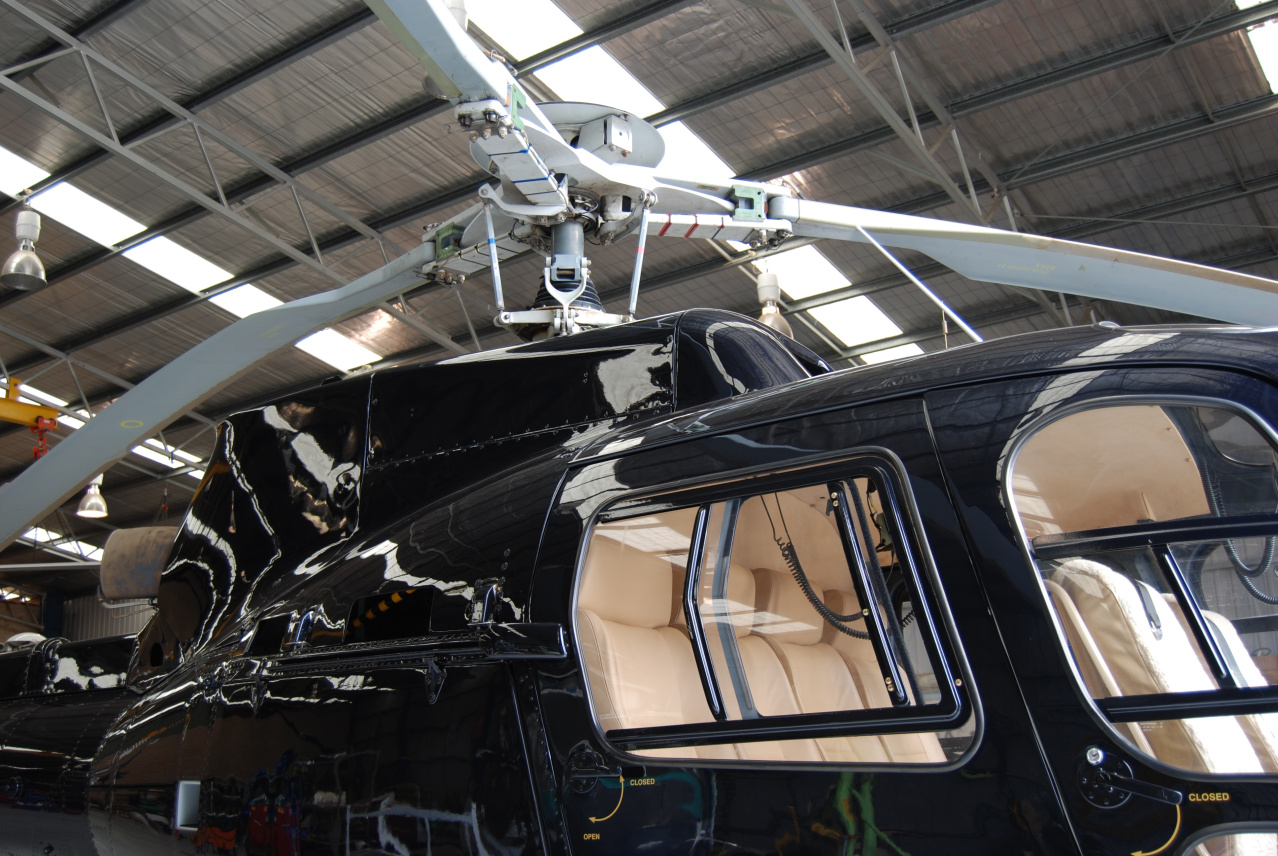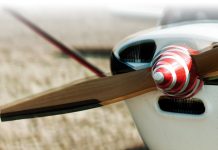Flight Safety Australia looked at helicopter maintenance in this 2011 feature. The safety fundamentals are unchanged but the prices quoted in the story have no doubt have gone up since then…
The helicopter has an important distinction among all forms of transport: In no other vehicle does the safety of the pilot and passengers depend so completely on the vigilance of the person who services it.
Helicopter component failures tend to have severe consequences. A classic single rotor helicopter has literally hundreds of components and failure or even partial failure of any them is likely to cause an emergency or a crash.
The departure in flight of a main or tail rotor blade is an obvious problem but failures of hinges, pins, pushrods, gears and fasteners have also brought down helicopters.
‘A helicopter has more single point failures with the potential for disaster than possibly any other machine. History shows that the omission or loss of even a single split pin can result in disaster,’ Civil Aviation Safety Authority rotary wing maintenance specialist Roger Alder says.
Discussions on helicopter maintenance typically centre on their intensive nature of the maintenance and the several or more expensive hours reputedly required in the hangar for each hour in the air.
It’s an understandable response based on the high cost per hour rates of helicopters compared with similarly sized fixed wing aircraft but is only half the story. While helicopter scheduled hangar time is certainly substantially higher than that of a fixed wing aircraft, the major difference between the two types of aircraft is the proportion of helicopter components that are routinely replaced. Buy a new Robinson helicopter, for example, and you will be replacing its major systems after 2200 hours, regardless of how carefully you’ve flown it – that’s the price of rotary wing safety.
‘That’s why there’s less of an ageing helicopter issue as there is for fixed wing aircraft.’ Alder says. However, he points out that helicopter wiring, which is often external and open to the environment, is subject to ageing due to greater exposure to sunlight, chemicals and inadvertent handling. ‘Helicopters are unique in that all the highly stressed dynamic parts subject to fatigue failure are retired according to the designated fatigue life for that part.’ There are also comprehensive corrosion control programs that are always being improved upon – based on field defect reporting experience.
Robinson’s published cost-of-ownership figures work out to 23 minutes of hangar time per hour of flying time for a new R44 piston-engine four place helicopter. This compares with Cessna’s figure of about 13 minutes for a new Cessna 172 SP, but the sting is in the fine print. The R44 requires a major airframe and systems overhaul at 2200 hours, at a component cost of $US120,000. And that is in addition to an engine overhaul, priced by Robinson at $US41,000.
Like all Robinson helicopters, the R44 has built its reputation on being exceptionally affordable by helicopter standards, both to acquire and operate. (The other extreme is the US Marines’ CH-53 Super Stallion which Jane’s Defence Weekly reported as requiring 44 man-hours of maintenance for every hour it spent in the sky). But even economical Robinsons can’t escape the fundamental fact of rotary wing life – vibration. It is the reason why helicopters have their main components ripped out at defined intervals and are routinely rebuilt with new components.
Vibration is inherent in all helicopters, whether piston-engine or turbine powered. It comes from the helicopter’s large number of rotating parts.
‘Put it this way: from a maintenance point of view, a helicopter is thousands of moving parts all trying to get away from each other,’ a senior engineer with a major commercial helicopter operator told Flight Safety.
The largest vibration amplitudes come from the main rotor. Two factors influence vibration: rotor rpm and the number of blades. Vibrations also increase with density altitude, airspeed (which affects vibration logarithmically) and weight.
Vibrations which result from the main rotor flapping (increasing and reducing each blade’s angle of attack as its turns) are transmitted to the fuselage in several frequencies, N/rpm, 2N/rpm, 3N/rpm and so on. There are also chord vibrations (undertones and overtones) that are transmitted at frequencies of N±1/rpm, 2N±1/rpm, 3N±1/rpm and so on.
The tail rotor also contributes vibrations, and engines, driveshafts and gearboxes all transmit vibrations into the airframe.
Vibration does bad things to rotor blade structural integrity, component life, instrumentation, and structure. It also affects comfort and control for passengers and pilot.
Despite much improved vibration suppression in modern helicopters, overall helicopter vibration levels of approximately 0.05 to 0.1g are higher than for fixed wing piston aeroplanes and significantly higher than those of jet aeroplanes, which are below 0.01g.
Managing and minimising vibration is a major part of helicopter maintenance.
The main anti-vibration measure helicopter engineers use is dynamic rotor track and balance. This involves inspecting the running rotor with a strobe light (although an early method was to coat it with chalk and observe how it was thrown off the rotor). The engineer checks that the blades are rotating consistently in the horizontal plane and that the rotor disc is stable in the vertical plane.
Rotor tracking and balancing is a major job that can take one or more days of maintenance time and several test flights
Because vibration is often an advance warning of failure, health and usage monitoring systems (HUMS) are used, particularly on commercial helicopters, to monitor the burden of vibration on their systems and airframes. A factor that increases the operating costs for commercial helicopter operators is that there is no standardisation in HUMS. Different types, and even different variants of the same type, use different hardware and software.
Helicopter components can be monitored by spectral analysis: Microsensors convert vibrations across a spectrum of frequencies into a signal that can be remotely monitored. Each gear in a transmission will have a sonic ‘signature’ and wear or damage will be revealed by any variation to this signature.
Spectral analysis can detect cracks, loose attachments, high temperatures or bearing failures. Sensors can be linked to the flight deck to warn the crew of variations in signatures that could mean imminent failure.
Helicopter systems are all connected to each other and interact with each other in a way that few fixed wing aircraft do, Alder says. One adjustment can affect many others.
‘Take the main rotor pitch links. It is possible to adjust them for optimum hover track in such a way as to ignore the effect of the adjustment on the ability to maintain rpm in autorotation in an emergency descent. The maintenance manuals continually warn that “an excessive angle of attack on the rotor blades a can cause rpm decay in autorotation’’.’
The single simple message that helicopter pilots and operators must know about maintenance is the importance of recording flight times accurately, Alder says. While aviation in general is unforgiving of any error, helicopters are particularly unforgiving of skimped maintenance or non-compliance with airworthiness directives and service bulletins, he says.
‘To fly with the circuit breaker for the hour recorder pulled, as some pilots are said to do, is to leave a time bomb for whoever’s flying the helicopter after you. It might not go off for months or years but it’s a time bomb just the same.’
But Alder says a well maintained helicopter is potentially among the safest of aircraft. ‘I’d rather be in a helicopter with an engine failure than any other kind of aircraft. If you’re flying in accordance with the flight manual, you can dissipate the energy, land softly with very low forward and vertical speed, open the door and walk away. Try that with fixed wings.’






Comments are closed.